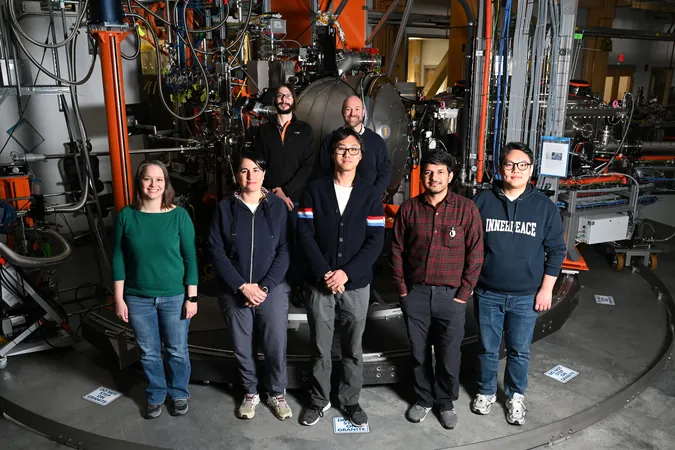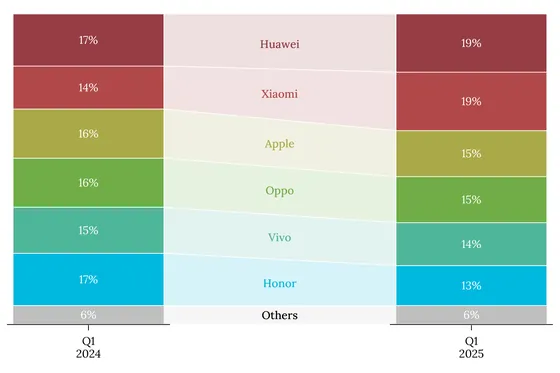
Unveiling the Secrets of Nickelate Superconductivity: A Leap Towards Tomorrow’s Technologies
2025-01-17
Author: Rajesh
Recent research has shed light on the enigmatic world of "infinite-layer" nickelate materials, which are touted as promising contenders in the realm of high-temperature superconductivity. These peculiar materials, distinguished by their unique crystal and electronic structures, have been synthesized exclusively as thin films that often require a protective capping layer. However, this protective measure can inadvertently modify the intrinsic properties of the nickelate layered system, presenting a significant challenge for researchers.
A pioneering team from the National Synchrotron Light Source II (NSLS-II) at Brookhaven National Laboratory has made strides in this area by employing advanced X-ray techniques to investigate these materials. Their findings, featured in Physical Review Letters, are paving the way for a better understanding of nickelates and their superconductive properties.
A Historical Context: Superconductivity’s Evolution
Superconductivity has fascinated scientists since its discovery over a century ago in mercury, where it was found to conduct electricity without resistance. Initially observed only at frigid temperatures (around -415°F), the field took a dramatic turn in the mid-1980s when copper oxide materials, or cuprates, were discovered to exhibit superconductivity at much higher, yet still extremely chilly, temperatures of approximately -297.7°F.
This revelation ignited a global race among researchers to unlock new high-temperature superconductors. The potential benefits are staggering – the ability to engineer materials that can superconduct at more feasible temperatures could revolutionize power grids, enable magnetic levitation trains, enhance MRI technologies, and improve energy storage for electric vehicles.
In recent years, nickel-based materials have entered the spotlight, mirroring the characteristics of cuprates. Of particular interest is neodymium nickelate, which reveals remarkable superconducting properties when strontium is integrated into its structure. This composite constitutes what is known as an "infinite layer nickelate," where nickel atoms are organized in a two-dimensional lattice that appears to extend infinitely.
Unraveling the Impact of Capping Layers
Despite nickelates demonstrating superconductivity, this phenomenon has thus far only been observable in very thin films. This raises concerns regarding whether the capping layer significantly influences the superconducting properties, especially at the interfaces where the nickelate interacts with its substrate or protective layers. Early studies have yielded conflicting data regarding their properties.
Jonathan (Johnny) Pelliciari, a beamline scientist at NSLS-II, highlighted the sensitivity of these materials to environmental factors like oxygen and water, which necessitated the use of thin protective layers in prior studies. Pelliciari noted, “The delicate nature of these systems means that small alterations or defects can dramatically influence their properties. Our objective was to quantify the role of the capping layer and discern which observed effects might be misleading.”
To tackle this inquiry, the research team conducted a series of experiments utilizing two distinct beamlines at NSLS-II to scrutinize high-quality nickelate thin film samples, both with and without a capping layer of strontium titanate. They aimed to ascertain the effects of this layer on the magnetic and electronic properties, which are crucial since they underpin the superconductivity of the material.
A Comprehensive Experimentation Approach
By employing Resonant Elastic X-Ray Scattering (REXS) and Resonant Inelastic X-ray Scattering (RIXS) techniques, researchers gathered critical insights into the atomic and electronic framework of the infinite-layer nickelate thin films. The analysis revealed intricate details about the material's properties, including its electron density and the interactions of its spins – essential elements for comprehending the underlying mechanisms of superconductivity.
The findings indicated that magnetic fluctuations, termed "spin excitations," exist regardless of the presence of the protective layer, emphasizing that magnetism is an inherent characteristic of these nickelates. In samples with capping layers, magnetic properties were only marginally enhanced due to interface-related effects, which may arise from slight structural adjustments, defects, or lattice disorder.
Shiyu Fan, a postdoctoral researcher and lead author of the study, remarked, “The most significant takeaway from our research is the behavior of the spin wave in the presence or absence of the capping layer, suggesting that the magnetic and superconducting traits are innate to these infinite-layer nickelate materials.”
Future Prospects in Superconductivity Research
As scientists delve deeper into the similarities and differences between copper oxide planes in cuprates and those in nickelates, the quest for a comprehensive understanding of these superconducting phenomena becomes ever more crucial. Claudio Mazzoli, lead beamline scientist at CSX, encapsulated the excitement within the community, stating, “With superconductivity finally observed in nickelates, we stand on the brink of unraveling the physics that govern these materials, which could create transformative advancements for technology.”
As this field of research continues to progress, we may be inching closer to realizing the vision of a superconductive future, where energy losses are minimized, and innovative technologies become the norm rather than the exception.



 Brasil (PT)
Brasil (PT)
 Canada (EN)
Canada (EN)
 Chile (ES)
Chile (ES)
 Česko (CS)
Česko (CS)
 대한민국 (KO)
대한민국 (KO)
 España (ES)
España (ES)
 France (FR)
France (FR)
 Hong Kong (EN)
Hong Kong (EN)
 Italia (IT)
Italia (IT)
 日本 (JA)
日本 (JA)
 Magyarország (HU)
Magyarország (HU)
 Norge (NO)
Norge (NO)
 Polska (PL)
Polska (PL)
 Schweiz (DE)
Schweiz (DE)
 Singapore (EN)
Singapore (EN)
 Sverige (SV)
Sverige (SV)
 Suomi (FI)
Suomi (FI)
 Türkiye (TR)
Türkiye (TR)
 الإمارات العربية المتحدة (AR)
الإمارات العربية المتحدة (AR)